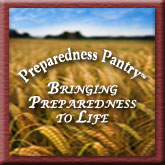This past Saturday I was able to attend the
Stamp Dealers Association of Georgia Spring stamp show. I was joined by my 11 year old son for his first visit to a stamp show. I love shows. I buy a lot of stamps on line these days but there's nothing like sitting at a dealer's booth, looking through his stock real time, examining the items of interest and choosing what you need right there on the spot. There were 15 dealers at this show offering items for every collecting area and budget. I had my Classic Era Canada want list with me this time and was able to find several things that I both needed and could afford (not always an easy trick!).
From Tony Roozen of
Stamps Unlimited I found some great Canada & Commonwealth sets at reasonable prices, among them these:
Tony was very helpful and he also maintains a full-service stamp store in downtown Atlanta. I've not yet been there but plan to visit him in the near future. I was also able to fill some holes in my Classic Canada used collection at
Stamp-tique. Glenn & Rowena Hanle were so nice and had an amazing selection of Canadian stamps that I greatly enjoyed looking through - though many were out of my league price-wise!
Besides filling some of those holes in your want list, another advantage of a show is the accumulated collecting knowledge at one's fingertips. Take a few minutes and talk to the dealers - many of whom have decades of experience stamp collecting. I spent a very enjoyable 20 minutes talking to a gentleman named Roy Mooney. Now in his 80's Roy spent many years documenting the thousands of FDC cancellations associated with the 7-1-71 transition from the old Post Office Department to the
USPS. These cancellations were done using a stamp issued for the occasion (Scott #1396) and a specially designed cache sent to all US post offices at the time:
I'd never heard of this collecting area or this particular postal history event. Only because I attended the show was I able to have my collecting knowledge expanded by Roy's patient and thorough explanation of this important event.
If you're interested in learning more about this, Roy has compiled his research into a book called "The 7-1-71 Affair" which lists all known post offices in the US issuing these FDC's and the corresponding value of an FDC from that office. It can be purchased directly from Roy Mooney - just e-mail him at reejm@internetemc.net letting him know of your interest.
Despite the prominence of the internet among stamp collectors and dealers today, there's still a place for a good old-fashioned stamp show and I'm glad I am able to get to one occasionally. Its an invaluable supplement to my mostly solitary collecting experience.




















